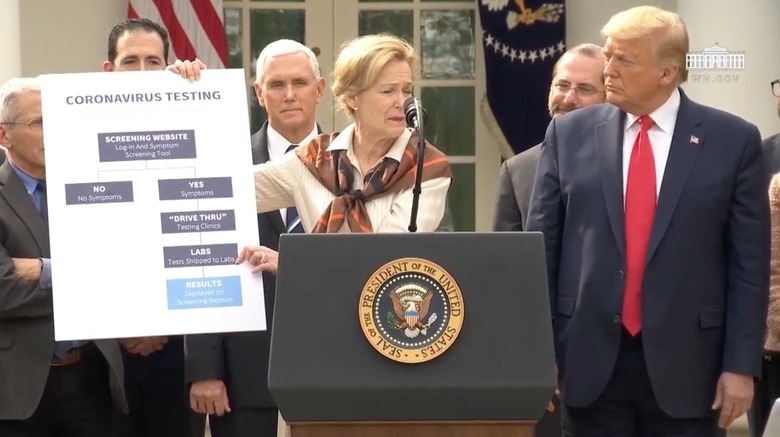After Trump's Big Coronavirus Test Promise, Here's What Google Is Actually Doing
Exactly what Google is doing during the coronavirus pandemic – and what, contrary to the announcements made by US President Trump on Friday, it isn't – has been detailed by CEO Sundar Pichai. Late last week, alongside Vice President Mike Pence, Trump insisted that Google had tasked 1,700 engineers with building a triaging website for America's response to COVID-19, which would assess individual cases and then direct them to tests and screening.
Problem is, that seemed to come as a surprise to Google itself. The company was tight-lipped about exactly what it was up to regarding coronavirus, and – unlike the CEOs of Walmart, Target, several pharma companies, and others – representatives from parent-company Alphabet were not present at the White House event.
Eventually, the details began to emerge, but sounded very different to what Trump had promised. Google was working on a fact site, the company said initially, with its medical-focused arm Verily building a trial site for triaging. That trial would only be operational in the Bay Area at first, from early this coming week, despite suggestions by Trump and Pence that it would be operational nationwide by Sunday evening.
Days later, Sundar Pichai gives the Google facts
Now, on Sunday afternoon, Google and Alphabet CEO Sundar Pichai has weighed in with the latest details. Google is, indeed, building a website in partnership with the US government, he confirmed. However, it's not a triaging system that will signpost potentially infected people to their nearest drive-thru test facility.
Instead, it will include "best practices on prevention, links to authoritative information from the World Health Organization (WHO) and the Centers for Disease Control (CDC), and helpful tips and tools from Google for individuals, teachers and businesses," Pichai says.
An initial version of the site should go live late on Monday, March 16. It will be updated and enhanced "on an ongoing basis," Pichai says. There'll also be more information in the company's COVID-19 SOS Alerts system, plus signposting through Search, Maps, and YouTube.
Last week, YouTube added a pop-up that pointed viewers to the official CDC channel. The company also added the ability to put a "temporarily closed" notice on business listings within Google Maps and Search; in the coming days it'll allow business owners to apply that label themselves. Google will also use Duplex to automatically contact businesses to get the latest details on their current hours during the pandemic.
Verily is working on COVID-19 testing triage - but in a very limited way
What Verily, the division of Alphabet focused on med-tech, is doing around coronavirus sounds closest to what President Trump announced on Friday. However, there's a gulf between how the Administration made the system sound then, and what Pichai says that Verily is currently working on.
"Alphabet's Verily, which is focused on health and life sciences, is working in collaboration with California state, local and federal health authorities to help establish testing sites in the San Francisco Bay Area, and on an online tool to increase risk screening and testing for people at high risk of COVID-19," Pichai explains. "Californians will be able to take an online COVID-19 screener survey through Verily's Project Baseline, and those who meet eligibility and requirements for testing will be directed to mobile testing sites based on capacity."
As that suggests, this will all be limited to a tiny portion of the US: the Bay Area. Verily "is in the early stages" of the pilot, Pichai points out, though "the plan is to expand to other locations over time."
For now, there's still plenty of unanswered questions about how those looking for coronavirus screening should go about that. While the Administration has insisted that anybody who needs a test can get one, that has been at odds with reports from healthcare facilities, many of which have claimed that they are unable to get possibly infected people through the process. That's believed to have heavily skewed the current official infection numbers, with some experts suggesting that the actual number of cases could be significantly higher.

